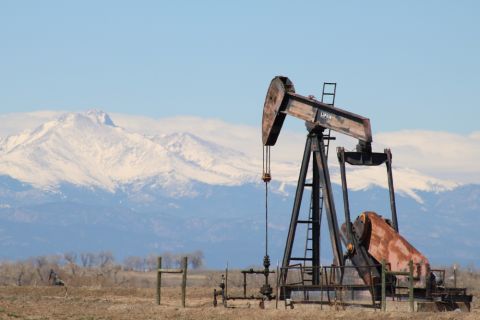
More than 100 attendees gathered the 2010 Research Partnership to Secure Energy for America (RPSEA) conference in Denver, Colo., to learn about progress in reservoir assessments in study areas spread across the U.S.
The in-progress studies presented at RPSEA’s Unconventional Gas Conference 2010 focused on:
- Improving resource assessment and drilling efficiency;
- increasing reserve recovery;
- re-fracturing and well stimulation;
- new or improved exploration techniques; and
- reducing environmental impact including water use.
The research study areas are diverse — Alabama and the Black Warrior Basin, New Albany shale in the Midwest’s Illinois Basin and Utah’s Piceance and Paradox basins. Field and lab findings, progress and techniques were discussed. The study groups are comprised of university researchers and scientists and oil and gas industry companies and experts.
Tom Chidsey of the Utah Geological Survey examined the Mississippian Manning Canyon Shale and Pennsylvanian Paradox formation. Shale beds within these formations are widespread, thick and deep enough to generate dry gas, and contain sufficient organic material and fractures to hold significant recoverable gas reserves. Currently the university and private-industry team is creating static reservoir models for key producing zones of Mamm Creek Field; correlating outcrops, well logs and regional seismic data; mapping fracture distribution; and building reservoir simulation models.
A presentation in the Illinois Basin focused on the New Albany shale of southern Illinois and Indiana and northern Kentucky. Julia Gale of the Bureau of Economics, University of Texas, and Iraj Salehi of Gas Technology Institute (GTI) discussed current challenges including unknown reserve size and possible production rates; unimproved recovery with horizontal drilling; an uncharacterized and complex natural-fracture system that creates unpredictable results from fracture-stimulation techniques; and local water management and waste disposal. According to Gale and Salehi, reverse vertical seismic profiling — placing a seismic source downhole with receivers on the surface — would improve understanding of the complex fracture system in the basin. Two companies currently drilling in the area are participating in the study by providing drill cuttings and access to more than 350 feet of core samples. Additional geochemical analysis, borehole imaging and maps and formation, reservoir, and fracture modeling are needed to provide better formation evaluation and engineering, as well as tight-gas reservoir fracturing and production forecasting.
Gas shales in the Black Warrior Basin and Appalachian thrust belt developments were another topic. They are being studied by the Geological Survey of Alabama. Jack Pashin explained that diverse and emerging plays exist in Cambrian through Mississippian strata and that the geologic framework was largely uncharacterized.
The Conasauga formation of the Appalachian thrust belt is geologically the oldest shale play and it is structurally complex. Devonian-age shales have gas potential in the thrust belt as well as in the Black Warrior Basin. Another shale under evaluation in the Mississippian Floyd (Neal) shale, where several vertical gas wells have been drilled with limited success. A horizontal well may be successful in this area but a better understanding of the stratigraphic, sedimentary structure, hydrodynamics, geothermics, petrology and permeability would make production more certain.
Advanced understanding of hydraulic fracturing and techniques is also under study by Dr. Kishore Mohanty, University of Texas, and Dr. Jagan Mahadevan of the University of Tulsa. Tight-gas zones frequently have low connectivity between the pore space and the well bore and often require large volumes of water to create or maintain a productive gas zone. Some of the problems they are studying include reasons some proppant designs and material can clog fractures in certain formations; instances when foam can be used to hold fractures open; and clean up, reduction and prevention of gel damage or production loss from some zones. Also, water evaporation can aggravate production problems.
The group is also experimenting with using dry pack sand and reverse pressure, dry-gas injection, and using a solvent (alcohol) with dry-gas injection.
Recommended Reading
ChampionX to Acquire RMSpumptools, Expanding International Reach
2024-03-25 - ChampionX said it expects the deal to extend its reach in international markets including the Middle East, Latin America and other global offshore developments.
Parker Wellbore, TDE Partner to ‘Revolutionize’ Well Drilling
2024-03-13 - Parker Wellbore and TDE are offering what they call the industry’s first downhole high power, high bandwidth data highway.
DXP Enterprises Buys Water Service Company Kappe Associates
2024-02-06 - DXP Enterprise’s purchase of Kappe, a water and wastewater company, adds scale to DXP’s national water management profile.
DNO Acquires Arran Field Stake, Continuing North Sea Expansion
2024-02-06 - DNO will pay $70 million for Arran Field interests held by ONE-Dyas, and up to $5 million in contingency payments if certain operational targets are met.
Select Water Solutions Bolts On Haynesville, Rockies Assets for $90MM
2024-01-31 - Select Water Solutions Inc. added disposal and recycling capacity in the Haynesville Shale and the Rockies across three acquisitions in January.





